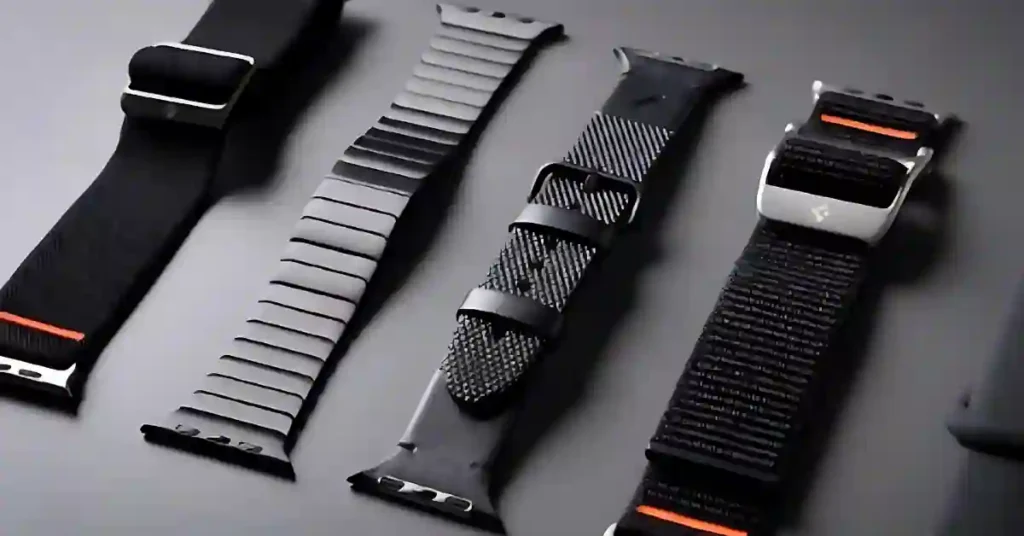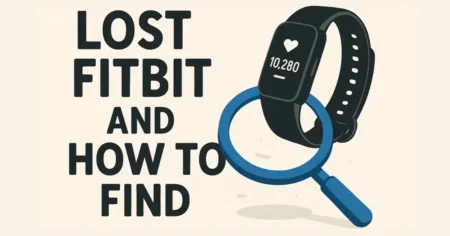A watch strap can transform your watch. It’s one of the easiest and most cost-effective ways to refresh its look without investing in a new timepiece.
Whether you’re a seasoned watch collector or just starting your journey, understanding watch straps opens a world of customization, comfort, and personalization.
This guide covers everything you need to know about watch straps, from the basics to advanced details, along with practical tips to style your timepieces.
Let’s explore the essential knowledge, materials, and styles behind watch straps and bracelets.
Basic Watch Strap Terms You Should Know
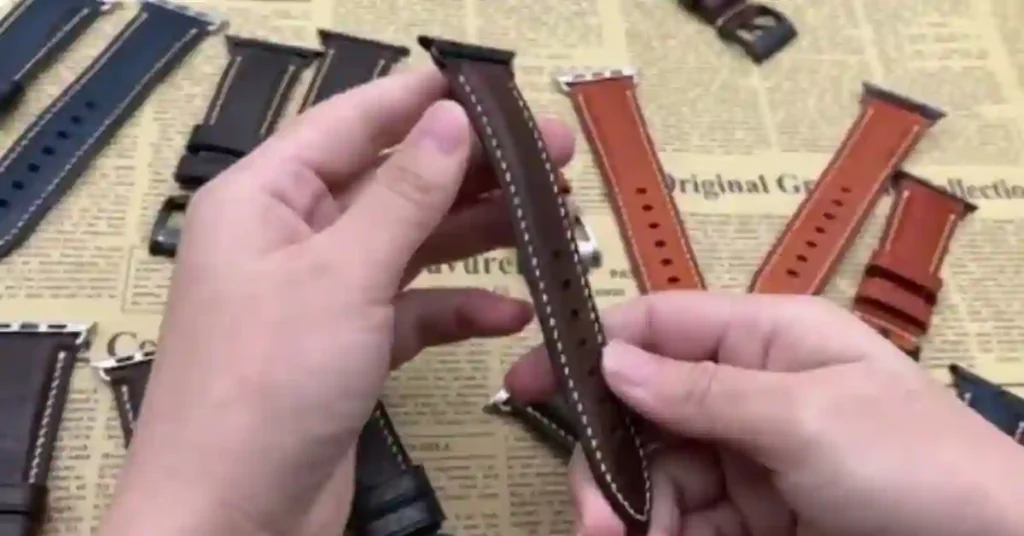
Before getting into the different strap types, it’s important to learn the key terms used in the world of watch straps.
These will not only help you choose straps more confidently but also assist in making the right decisions when swapping them.
Key Terms
- Lugs: The protruding parts of a watch case where the strap or bracelet attaches.
- Lug Width: The distance between the lugs, typically measured in millimeters. Common lug widths range from 16mm to 24mm.
- Straps vs. Bracelets: Straps are made from materials like leather, nylon, or rubber, while bracelets are typically metal.
- Spring Bars: Small, spring-loaded pins that secure the strap to the lugs.
- Integrated Lugs: Some watches, like the AP Royal Oak, require special straps due to a unique lug design.
- Clasp: The closure mechanism on a strap or bracelet, such as a pin buckle or deployment clasp.
To work with straps, you’ll need a spring bar tool, which helps safely remove and install straps.
Investing in a high-quality spring bar tool, like those made by Swiss brand Bergeon, can save your watch from damage.
How to Change a Watch Strap
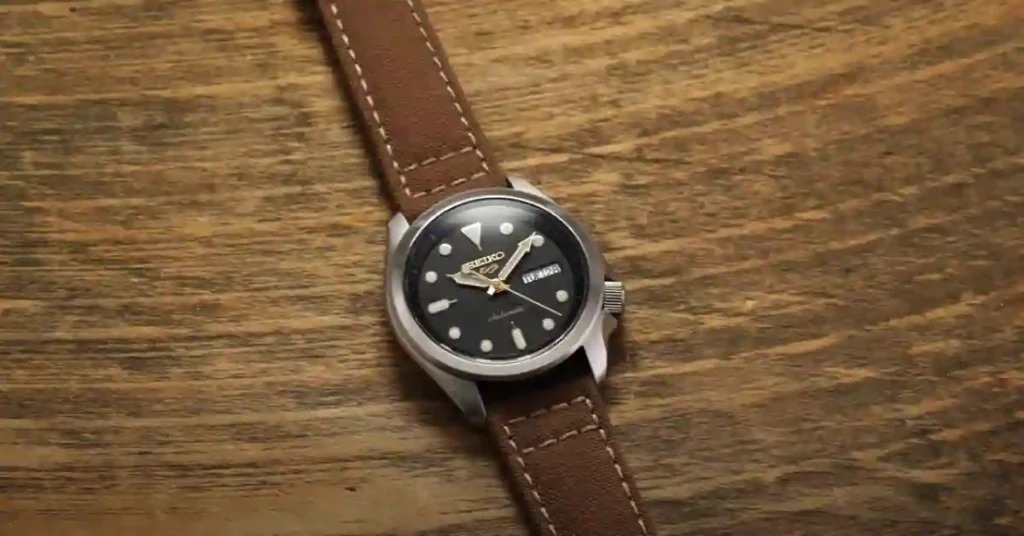
Switching watch straps is a straightforward process but does require care to avoid damaging your watch. Here’s a simple step-by-step guide to changing your strap at home.
Tools and Preparation
- Spring Bar Tool: Essential for detaching spring bars.
- Tape: Use tape to protect the lugs from scratches.
- Clean Surface: Avoid working on rough or dirty surfaces.
Step-by-Step Strap Removal
- Insert the forked end of your spring bar tool between the strap and the lug.
- Apply gentle pressure to compress the spring bar.
- When the bar detaches from one side, carefully remove the strap.
- Repeat for the other side.
Pro Tip: Use your non-dominant hand to hold the strap steady. This prevents the spring bar from flying across the room.
Installing the New Strap
- Insert the spring bar into the new strap’s holes.
- Position one side of the spring bar into the lug hole.
- Use the spring bar tool to compress the other side of the spring bar.
- Guide it into the opposing lug hole.
This may take practice, but once mastered, changing straps takes under two minutes.
Why Change Your Watch Strap?
Changing your watch strap isn’t just practical—it’s a creative opportunity. A carefully chosen strap enhances your watch’s aesthetics, matching different occasions or outfits.
For instance, a nylon strap gives a sporty feel, while leather adds elegance to formal events.
A strap makeover can also extend the lifespan of your watch. For example, using a water-resistant rubber strap protects your leather strap during outdoor activities or hot summer months.
Common Watch Strap Materials
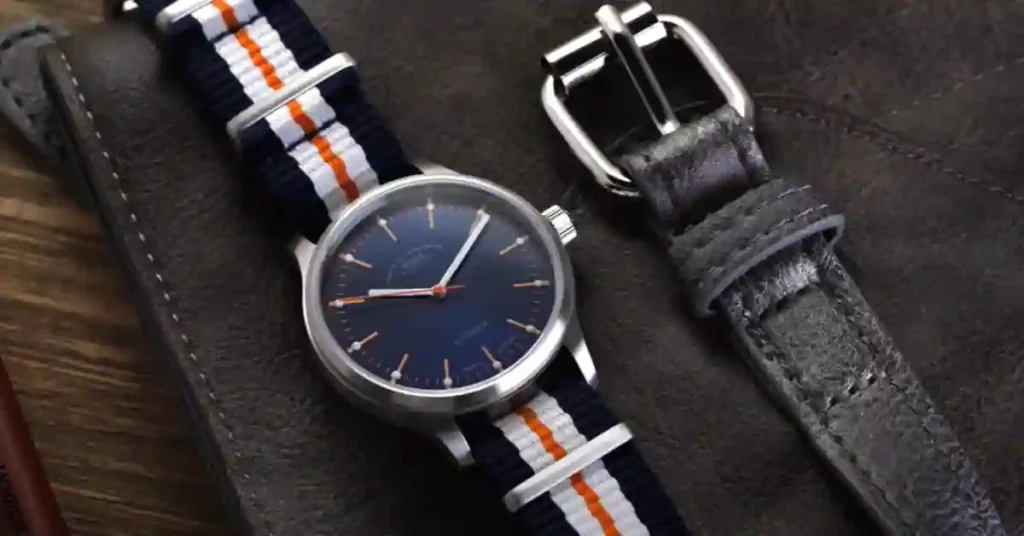
Watch straps come in various materials, each suited to specific styles and purposes. Here’s a breakdown of the most common options.
- Leather: Timeless and versatile, ideal for dress and casual watches.
- Rubber: Durable, water-resistant, and perfect for diving or sports watches.
- Nylon: Affordable, breathable, and light, great for everyday and rugged use.
- Fabric: Stylish and soft, often used with vintage or field watches.
- Metal Bracelets: Sturdy, long-lasting, and associated with luxury timepieces.
Let’s explore each material in greater detail.
Leather Watch Straps: Classic Elegance
Why Choose Leather?
Leather straps have a natural charm and can evolve with age, developing a patina unique to the wearer.
They’re incredibly comfortable and mold to your wrist over time, like a pair of well-worn shoes. However, leather isn’t waterproof, making it unsuitable for sweaty or aquatic conditions.
Types of Leather
- Full Grain Leather: The highest quality leather. It retains the animal hide’s natural texture, complete with imperfections or scars. Over time, full-grain leather develops a rich patina.
- Top Grain Leather: A refined and polished leather that offers uniformity. It’s durable but doesn’t patina as distinctively as full-grain leather.
- Split Grain Leather: Derived from lower layers of the hide, often used for soft pieces like suede.
- Exotic Leather: Unique and luxurious, including alligator, crocodile, ostrich, and lizard.
- Cordovan: Premium horse leather prized for its shine and durability.
Leather straps range in style, from distressed vintage designs to glossy finishes suited for formal settings. A well-made leather strap can last several years with proper care.
Rubber Straps: Sporty and Resilient
Rubber straps are the go-to choice for sports enthusiasts and water lovers. They’re non-absorbent, so they don’t soak up sweat or water, and dry quickly, making them ideal for outdoor adventures.
Types of Rubber
- Natural Rubber: Soft, durable, and lint-resistant, usually seen in premium watches.
- Silicone: A budget-friendly option, but prone to attracting dust and lint.
- Polyurethane (PU): Harder and less flexible but extremely durable, often used on entry-level dive watches.
Rubber straps typically complement dive and tool watches, adding a rugged, outdoor-ready feel.
Nylon and Fabric Straps
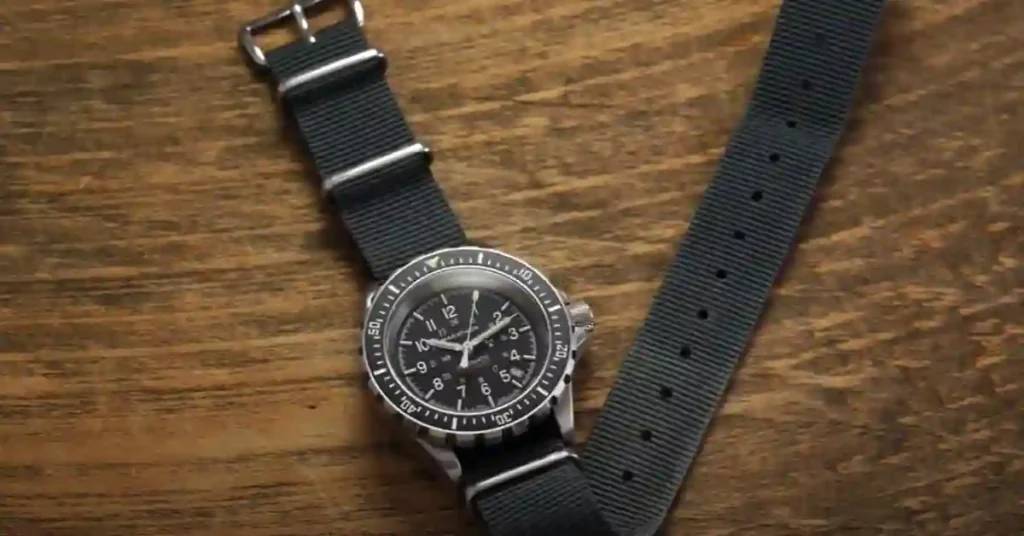
Nylon straps, especially NATO straps, are popular for their affordability, comfort, and versatility. They’re available in a variety of colors and patterns, allowing for a personalized touch.
Common Types of Nylon Straps
- NATO Straps: Secure and durable, featuring a one-piece pull-through design for added safety. Originally designed for British military use.
- Zulu Straps: Similar to NATO straps but with thicker nylon and bulkier hardware.
- Perlon Straps: Featuring a braided weave, these straps have adjustable buckles and a lightweight feel.
Nylon straps are perfect for casual wear and pair especially well with dive, tool, and field watches.
Specialty Strap Materials
Beyond the classics, there are innovative materials used in modern watch straps.
- Canvas: A vintage-inspired material often seen on field watches.
- Cordura: A tough, military-grade fabric resistant to abrasion.
- Eco-Friendly Options: Sustainable fabrics made from recycled ocean plastics, apple skins, or vegan leather.
These materials offer unique textures and align with eco-conscious lifestyles.
Metal Bracelets: Durable and Timeless
Bracelets are metal alternatives to straps, typically made from stainless steel. They add durability and a more polished aesthetic. Common designs include:
- Oyster Bracelet: A three-link design popularized by Rolex, known for its robust structure.
- Jubilee Bracelet: A five-link bracelet with added flexibility and elegance.
- Mesh Bracelet: Made of finely woven metal threads, offering a refined yet breathable look.
- Beads of Rice Bracelet: A retro design featuring rounded beads, commonly used in vintage diver watches.
Bracelets are versatile, but their design and metal tone should match the watch seamlessly for a cohesive look.
Styling Watch Straps: Best Practices
Matching the right strap to your watch is part of the fun. Consider these tips:
- For dive watches, opt for rubber or stainless steel.
- Military-style watches look great with NATO straps or leather.
- Dress watches pair best with alligator or crocodile leather.
- Consider matching strap colors to your outfit, shoes, or belt.
Having a variety of straps allows you to adapt your watch for different occasions effortlessly.
Examples of Strap Pairings
Here are some examples of how different straps can enhance the appearance of various watches:
- Marathon GSAR (Dive Watch): Black rubber strap for water resistance or a sand-colored NATO strap for a rugged look.
- Hamilton Khaki Field (Field Watch): Distressed leather for a vintage vibe or a Cordura strap for durability.
- Max Bill Chronoscope (Dress Chronograph): Black cordovan leather for a sleek look or a mesh bracelet for modern elegance.
- Vintage Gold Dress Watch: Lizard or crocodile straps provide a sophisticated and timeless feel.
Best Watch Straps and Bracelets
Conclusion
Watch straps are more than just functional—they’re an extension of your style. Swapping out straps is an affordable way to transform the look of your watch while tailoring it to any occasion or lifestyle.
Start with a few quality straps, experiment with different materials, and enjoy the creative freedom that comes with customizing your watch.
Whether you’re aiming for elegance, durability, or comfort, there’s a strap out there that perfectly complements your timepiece.

